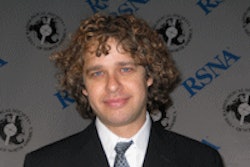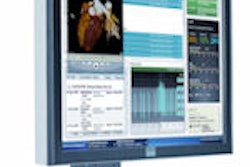A PACS software plug-in can automate the retrieval of clinical follow-up information relevant to radiology exams, according to research from the University of California, San Francisco (UCSF) that was presented at this month's RSNA meeting in Chicago.
Clinical follow-up for radiology is essential for patient outcomes, education, self-assessment, and departmental quality assurance. However, it's rarely performed due to factors such as remote interpretations, the fast-paced and high imaging volume seen today in radiology practices, and disjointed information systems, said Dr. Thomas Urbania, a UCSF radiology resident.
"There are a couple of standard cases where we always get follow-up: the 'Case of the Week' where everybody calls or comes down to the reading room scratching their heads about a particular case ... and the 'Big Miss,' " Urbania said. "Both of those types of cases require serendipity -- you don't get to pick which cases are interesting and follow up."
The UCSF team wanted to develop a mechanism for prospectively identifying interesting cases within the PACS. By being able to quickly mark a study for follow-up, radiologists could obtain follow-up with minimal workflow interruption.
The researchers developed a PACS software plug-in that offers automated medical record search, e-mail notification of results to radiologists, and a Web-based secure list of cases, Urbania said. He presented the UCSF's experience with the PACS software tool during a scientific session at the 2008 RSNA meeting in Chicago
Users select the type of information most likely to be of interest to them, such as operative note, pathology report, or discharge summary, according to the research team.
A separate software component with an intelligent search algorithm then periodically searches the electronic medical record database. Radiologists are notified when relevant follow-up information becomes available, according to the UCSF team. A relevance score is also displayed for the search results.
After reviewing the results, radiologists can also provide feedback to the system as to whether it answered the question they were looking for, he said.
In future directions, the UCSF team would like to explore formal education applications, including identifying cases for formal case conferences and for submission to teaching files. The group would also like to continue to improve the search mechanism, utilizing different algorithms for comparison, dynamically adjusting the search findings' relevance score, and employing a standard lexicon like RadLex, he said.
The tool could also be used for personal quality assurance and expanded to a departmental quality assurance tool, Urbania said.
By Erik L. Ridley
AuntMinnie.com staff writer
December 15, 2008
Related Reading
QA tool cuts errors in radiation oncology department, August 6, 2008
Mayo pares PACS limitations with intelligent image routing, June 11, 2008
Software unifies control of multiple informatics applications, June 2, 2008
Communication and prevention are key to minimizing PACS downtime effects, May 19, 2008
Using informatics to meet communication challenges, February 7, 2008
Copyright © 2008 AuntMinnie.com




















